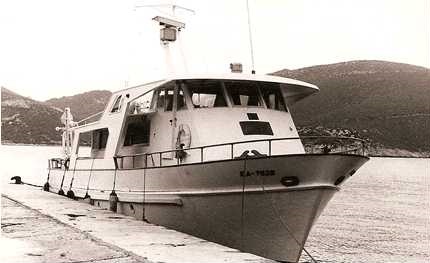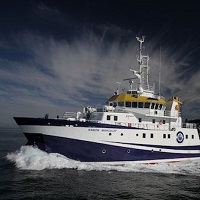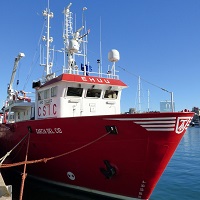Contact for the resource
IEO/ Balearic Islands Oceanographic Centre
177 record(s)
Type of resources
Categories
Topics
INSPIRE themes
Keywords
Contact for the resource
Provided by
Years
Formats
Status
-

Estimation by acoustical methods stock biomass of anchovy (Engraulis encrasicolus) and sardine (Sardina pilchardus) Spanish Mediterranean.
-

Estimation by acoustical methods stock biomass of anchovy (Engraulis encrasicolus) and sardine (Sardina pilchardus) Spanish Mediterranean.
-

Background and Aims MEDWAVES The Strait of Gibraltar (SG) and the surrounding areas, Gulf of Cadiz (GoC) in the Atlantic, and Alboran sea (AS) in the Mediterranean, are key areas to understand the distribution and connectivity of marine communities (Patarnello et al. 2007), as the SG and the encounter of water masses at the Almeria Oran front represent an oceanographic transition area, connecting the Atlantic Ocean and the Mediterranean Sea (Lacombe & Richez 1982). The Mediterranean water flows out from Gibraltar (MOW), extends towards the East of the Atlantic, building a warm and salty water mass which propagates in North West direction from Portugal originating the “Mediterranean Water“ (MW) in the Atlantic. This warm and salty water mass becomes characteristic of the North Atlantic in mid waters (around 1100 m) (Candela 2001). The occurrence of cold-water coral (CWC) communities in the NE Atlantic has been related to the pathway of the MOW, whereby this current system would have an historical influence on the migration of coral larvae and (re)colonization of the Atlantic in the post-glacial era (De Mol et al. 2005, Henry et al. 2014). The MEDWAVES (MEDiterranean out flow WAter and Vulnerable EcosystemS) cruise target areas under the potential influence of the MOW within the Mediterranean and Atlantic realms. These include seamounts where CWC have been reported but that are still poorly known, and which may act as essential “stepping stones” connecting fauna of seamounts in the Mediterranean with those of the continental shelf of Portugal, the Azores and the Mid-Atlantic Ridge. During MEDWAVES sampling will be conducted through two of the case studies of ATLAS: Case study 7 (Gulf of Cadiz-Strait of Gibraltar-Alboran Sea) and Case study 8 (Azores). The main goals of the cruise are: (1) to characterize physically and biogeochemically the MOW Path and understand its interaction with the general Atlantic Meridional Overturning Circulation (AMOC) stream, from the Alboran Sea to the Azores, through the Gulf of Cadiz, and the Ormonde Seamount (see map), exploring the relationship between the oceanographic settings of these target areas and the ecosystems therein (ATLAS WP1 and WP3) and (2) to characterize communities associated to the transition area, and sample for population genetic analysis aiming at understanding the way the populations located in the target areas contribute or have contributed to connectivity between the Mediterranean Sea and the Atlantic Ocean (ATLAS WP3 and WP4). Results gathered during the cruise will also contribute later to feed other ATLAS WPs. The activities planned to achieve these aims are presented in the brief description of the work program of the different research teams participating in ATLAS (Work program of the research teams).
-

Sampling at Ithioplacton stations, CTD stations and pelagic fishing, acoustic sampling with EK60 echo sounder. The general method is to quantify the freshly spawned eggs in the water column on the spawning grounds. Report egg species identification and staging. To be able to establish a relationship between eggs and biomass of the spawning stock, the fecundity of the females must also be determined.
-
Benthopelagic ecosystem structure in the western Mediterranean: a multidisciplinary approach and different time scales in the Balearic Islands.
-
Benthopelagic ecosystem structure in the western Mediterranean: a multidisciplinary approach and different time scales in the Balearic Islands.
-

Cr Cambrils-2 ref. B2945803.976 ICES created form
-

Identification of benthic communities. During the cruise is intended to cover the following targets: - Identify the benthic habitats and their spatial distribution by direct sampling (epibentonic trawl) and indirect (ROV, sled). - Complete the floristic and faunistic inventory. - Characterize the sediment (grain size and organic matter). - Multibeam bathymetric survey. Further analysis of this information will give us to : - Perform a bionomic map of marine benthos, representing the bottom type and the biological community that inhabits it. - Estimate the benthic biodiversity. - Estimate the abundance of the most characteristic species. - Mapping the main habitats of interest. - Get a sedimentary map. - Complete the geomorphology of the study area.
-

The general objective of the RADMED-DOS project is the multidisciplinary monitoring of the platform and deep waters of the Mediterranean, the peninsular coast and the Balearic Islands.
-

El conocimiento mas completo del ecosistema pelagico Balear
 Catálogo de datos del IEO
Catálogo de datos del IEO